Exploring Korea’s Traditional Markets: A Foodie’s Guide
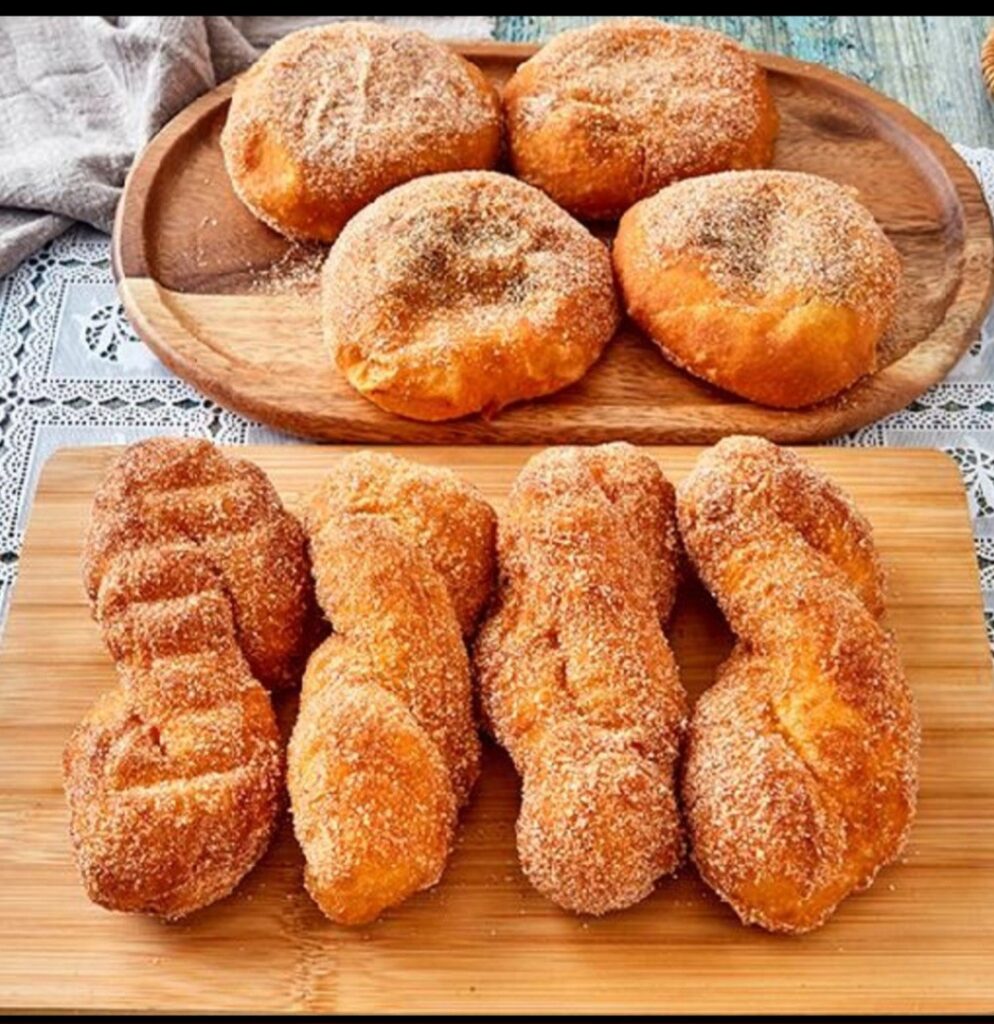
Visiting Korea offers a vibrant tapestry of experiences, and one of the best ways to immerse yourself in its culture is through its traditional markets. These bustling hubs are not only a paradise for food lovers but also a window into the daily lives of Koreans. In this guide, we’ll explore some of Korea’s most iconic traditional markets, highlight must-try street foods, and provide tips for making the most of your visit.
Why Visit Korea’s Traditional Markets?
Korea’s traditional markets are more than just places to shop—they are cultural landmarks. Here, you can sample authentic Korean street food, purchase unique souvenirs, and experience the lively atmosphere that defines Korean market culture. These markets offer a glimpse into Korea’s rich heritage and are a must-visit for any traveler.
A Glimpse into Korean Daily Life
Markets like Gwangjang Market in Seoul or Jagalchi Fish Market in Busan offer insights into Korean daily life. From vendors loudly advertising their goods to locals bargaining for the best prices, these markets are a microcosm of Korean society.
Culinary Adventures Await
For foodies, Korea’s traditional markets are a treasure trove. From the sizzling sound of tteokbokki (spicy rice cakes) to the mouth-watering aroma of freshly made hotteok (sweet pancakes), the culinary delights are endless.
Must-Visit Traditional Markets in Korea
Gwangjang Market, Seoul
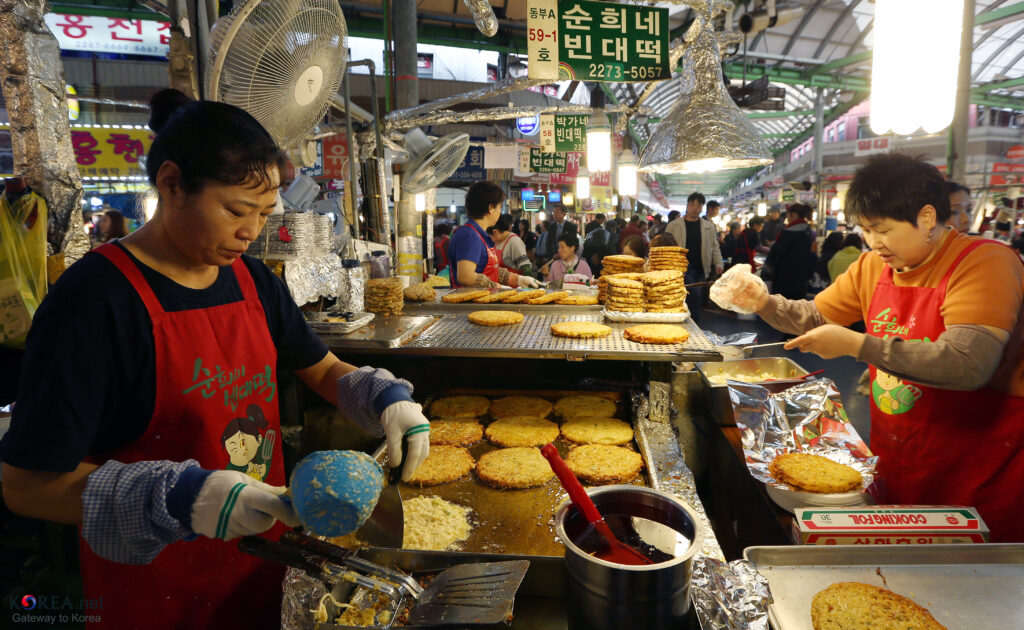
Gwangjang Market is one of the oldest and largest traditional markets in Seoul. It is renowned for its food alley, where you can find a myriad of street foods that are both delicious and affordable.
Must-Try Foods at Gwangjang Market
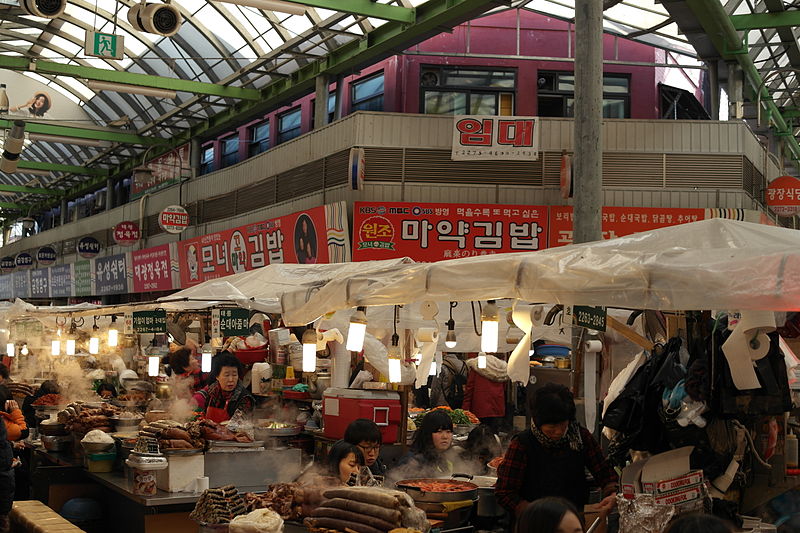
- Bindaetteok: These savory mung bean pancakes are a must-try. They are crispy on the outside and soft on the inside, often served with a side of kimchi.
- Mayak Kimbap: These bite-sized rice rolls are incredibly addictive, hence the name “mayak,” which means “drug” in Korean.
- Sundae: Korean blood sausage made with pig’s intestines stuffed with a mixture of blood, noodles, and vegetables.
Jagalchi Fish Market, Busan
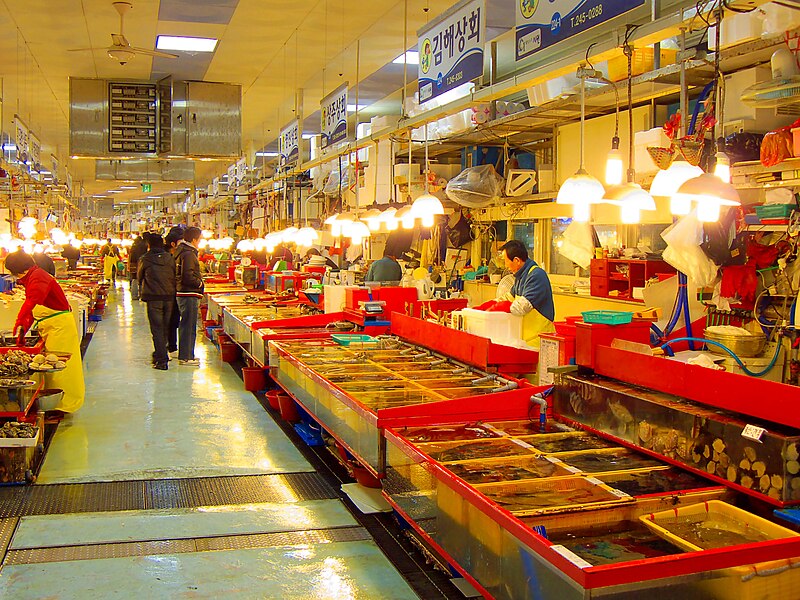
Must-Try Foods at Jagalchi Fish Market
- Hoe: Korean-style sashimi, freshly sliced and served with a variety of sauces.
- Grilled Eel: Fresh eel grilled to perfection, often enjoyed with a glass of soju.
- Live Octopus: For the adventurous eater, try sannakji, which is live octopus chopped into pieces and served immediately.
Namdaemun Market, Seoul
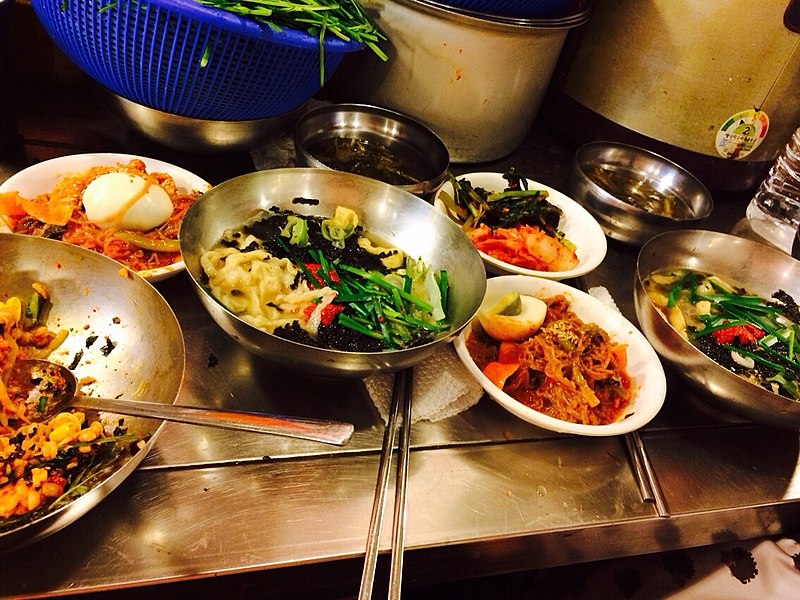
Must-Try Foods at Namdaemun Market
- Kal-guksu: Handmade knife-cut noodles served in a rich broth.
- Hotteok: Sweet pancakes filled with a mixture of brown sugar, honey, chopped peanuts, and cinnamon.
- Twigim: A variety of deep-fried snacks, including vegetables, seafood, and dumplings.
Lesser-Known Markets Worth Exploring
Tongin Market, Seoul
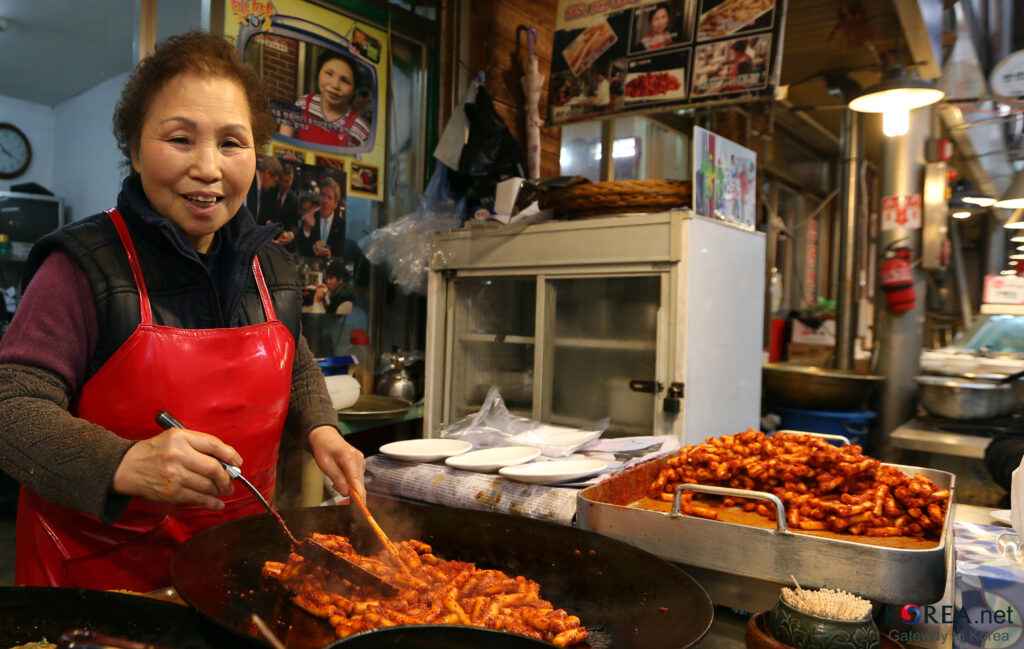
Tongin Market is a smaller, lesser-known market in Seoul that offers a unique dining experience called “Dosirak Cafe.” Here, you can purchase traditional Korean lunch boxes and fill them with a variety of dishes from different stalls.
Seomun Market, Daegu
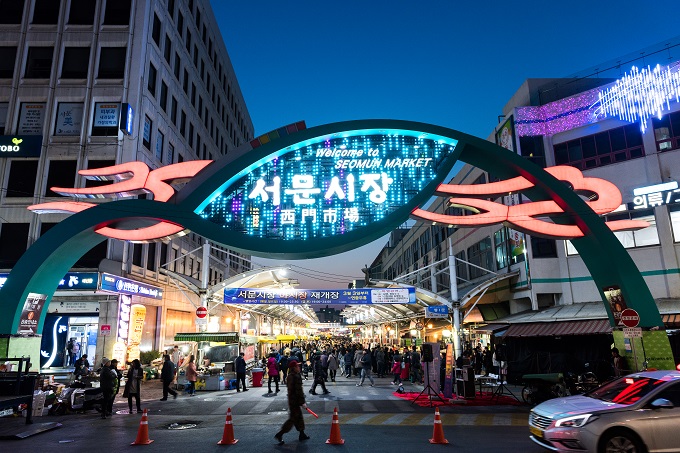
Seomun Market in Daegu is one of Korea’s oldest markets, dating back to the Joseon Dynasty. It’s known for its textiles and fabrics, but it also offers a fantastic range of street food.
Sokcho Tourist & Fishery Market, Sokcho
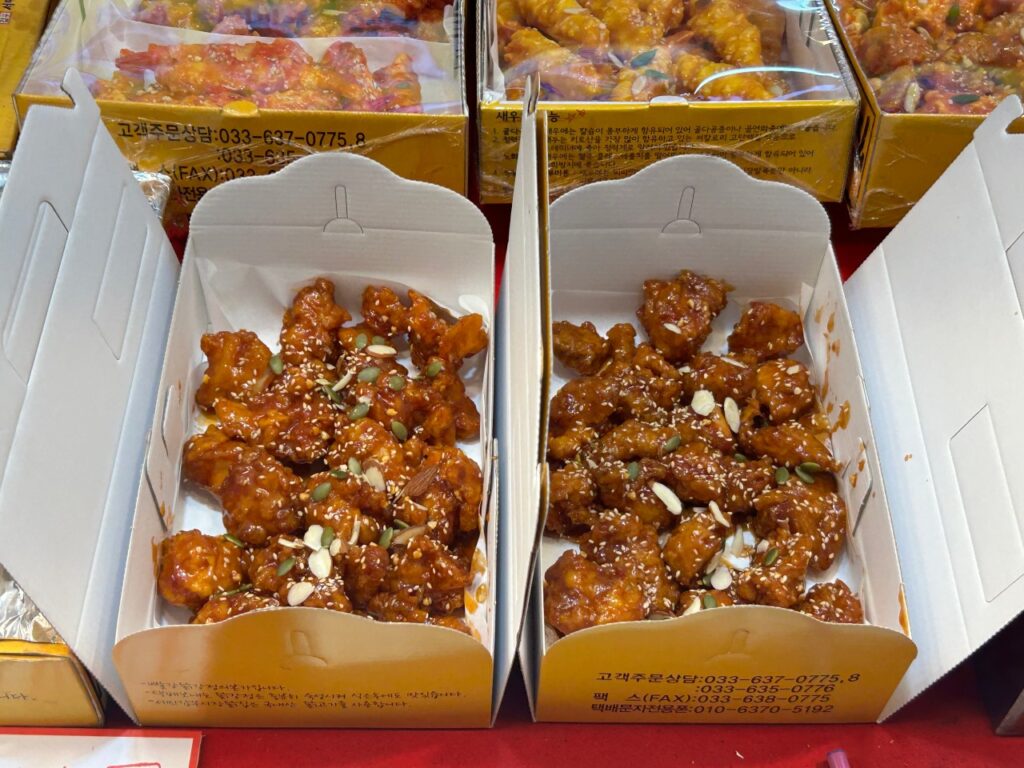
Located in the coastal city of Sokcho, this market is famous for its fresh seafood and local specialties like dakgangjeong (sweet and spicy fried chicken).
Tips for Exploring Korean Markets
Be Prepared to Bargain
Haggling is a common practice in traditional markets. Don’t be afraid to negotiate prices, but always do so respectfully. A friendly smile and polite approach can go a long way.
Respect Local Customs
When visiting these markets, it’s important to be mindful of local customs. For instance, when eating at food stalls, it’s polite to order something if you plan to sit. Also, remember to dispose of your trash properly and be considerate of others around you.
Bring Cash
While some vendors may accept credit cards, it’s always a good idea to carry cash, especially for smaller purchases. ATMs are usually available near market entrances.
Try New Things
Don’t be afraid to step out of your comfort zone and try new foods. Korean markets offer a wide range of unique dishes that you won’t find anywhere else. Ask vendors for recommendations and be adventurous with your choices.
Visit Early or Late
Markets can get very crowded, especially during peak hours. To avoid the rush, consider visiting early in the morning or later in the evening. This way, you can enjoy a more relaxed experience and have better opportunities to interact with vendors.
Korea’s Exclusive Accommodation Platform for Foreigners
🏠 Now, Popular Accommodations


